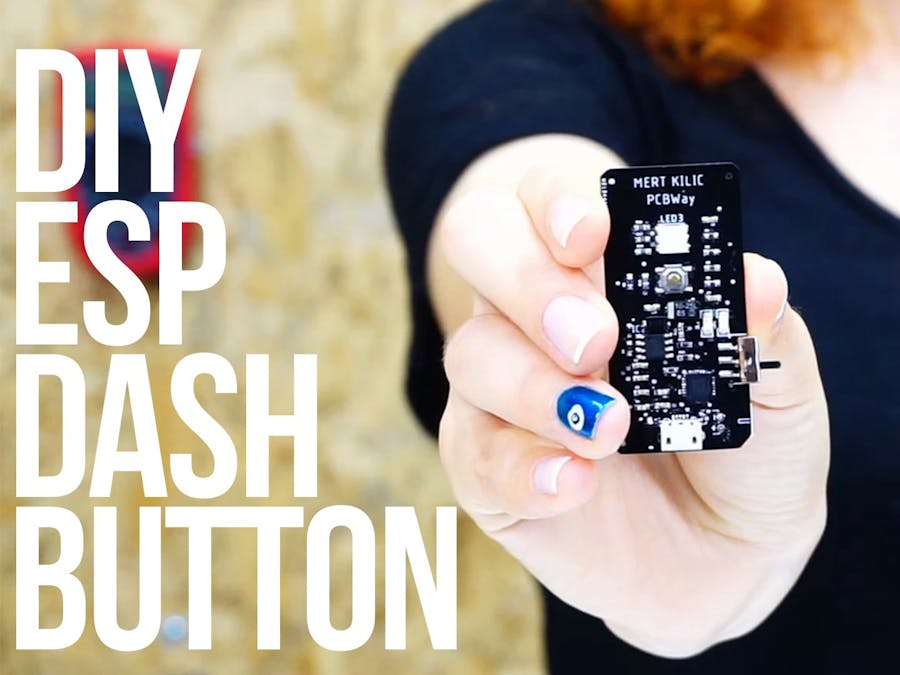This is like a remote control that you can take in your pocket or place anywhere that when pressed sends out an email. The Wi-Fi button is not a new idea. Dash button is a small button that instantly orders a product to your home. Since the ESP boards are so inexpensive, we can make a similar project that works like the Dash button.
Instead of ordering a product we can turn on a light, share a post on Instagram, Twitter and Facebook, trigger an email notification and much more, as you’re going to see by the end of this project.
See how it works! You can see all the steps of this project in this video.
Video Link - https://youtu.be/v9rtv5yPHh4
Download Gerber File & Order PCBWe have built "Arduino Project Board" before. You remember we have ordered our PCB from PCBWay. In this project, we have choosen PCBWay. They become the sponsor of his project. PCBWay is the only way to make this project happen a very low cost and high quality. We also used SMD components. So we ordered double-side stencil.
$0 For New members first order & Low Price for PCB Stencil at https://www.pcbway.com/
PCBWay Celebrating 5th Anniversary | FREE gifts are waiting for you - http://bit.ly/2Z5knPj
I CAN SOLDER KIT Win Up To $800 + in prizes - http://bit.ly/2Z5knPj
ESP Dash Button PCB Files - http://bit.ly/2ELyf9O
IFTTT - If This Than ThatFor this project we’re going to use a free service called IFTTT that stands for If This Than That. This service is used to automate a wide variety of tasks online. In this case, we will send an email, facebook and twitter post when the ESP pushbutton is pressed.
Type in your browser https://ifttt.comand click the “Get started” button in the middle of the page. Complete the form with your details and create your account.
In the wesite, Open the “My Applets” tab, press the create “New Applet” button.
Click the “This” word and search for the “Webhooks” service.
You need to type in the event name button_pressed. With the Webhooks service you can trigger an action when you make an HTTP request to a specific URL.
Now press the “That” word and search for the Gmail service or any other services like facebook, twitter and instagram.
If it’s the first time using the Gmail service with IFTTT, a new window opens and you’ll have to grant access, so IFTTT can send out emails through your account.
Choose the “Send email” option and enter the email address in the “To address” field where you want to receive your notification.
You can customize the subject and body of the email. Finally press the “Create action” button.
You should have your Applet created after clicking “Finish”
Open the “Search” tab, find the Webhooks service and open it. Go to the “Documentation” tab.
Here you can find your API KEY that you must keep private. Type in the event name, button_pressed. Your final URL should appear in the bottom of the web page. Copy that URL.
Save your unique URL, because you’ll need it later in this project.









Comments